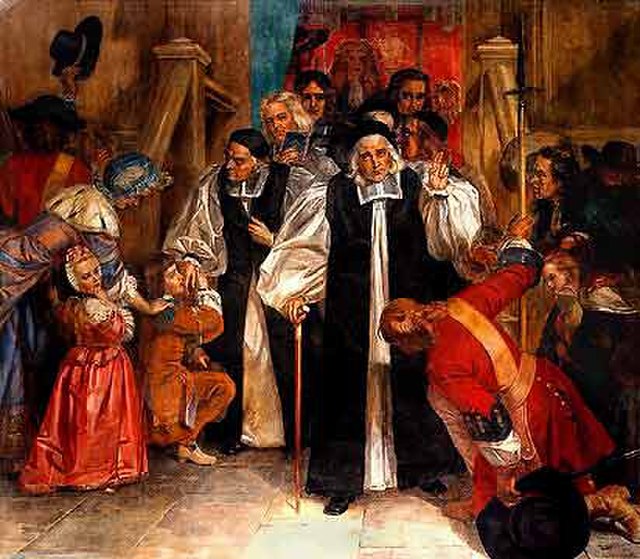The Nonjuring schism refers to a split in the established churches of England, Scotland and Ireland, following the deposition and exile of James II and VII in the 1688 Glorious Revolution. As a condition of office, clergy were required to swear allegiance to the ruling monarch; for various reasons, some refused to take the oath to his successors William III and II and Mary II. These individuals were referred to as Non-juring, from the Latin verb iūrō, or jūrō, meaning "to swear an oath".
The Seven Bishops, June 1688; their acquittal was a key factor in the removal of James but five became Non-Jurors out of conscience
Non Juror bishop George Hickes (1642–1715), the driving force behind the schismatic Non Juror church
Lady Elizabeth Hastings, typical of the High Church Tories associated with the Non Jurors, whose influence was far greater than their numbers
Charles Stuart; after his death in 1788, the Scottish Episcopal Church ended the schism by taking the Oath to George III
Mary II was Queen of England, Scotland, and Ireland, co-reigning with her husband, King William III and II, from 1689 until her death in 1694. She was also Princess of Orange following her marriage on 4 November 1677. Her joint reign with William over Britain is known as that of William and Mary.
Portrait by Godfrey Kneller, 1690
Portrait by Caspar Netscher, 1676, the year before her marriage
Portrait by Peter Lely, 1677
Mary's father, James II and VII, was the last Catholic monarch in Britain. Portrait by Nicolas de Largillière, c 1686.








